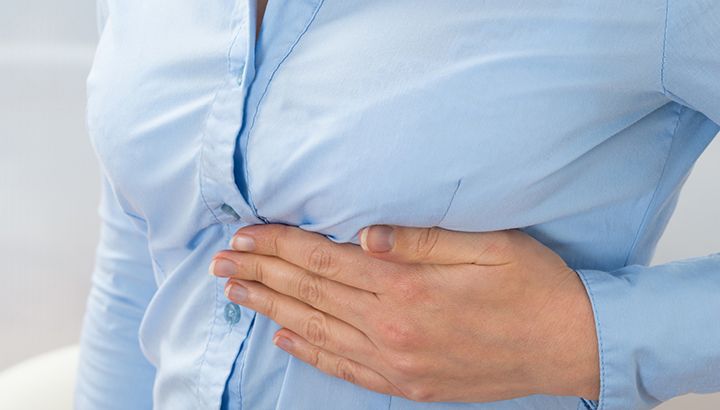Breast pain and tenderness is one of the sure signs that your hormones are in flux. Whether it’s a clue that your cycle is coming soon or you’re experiencing hormonal changes due to pregnancy, illness or menopause, your breasts can be the first part of your body affected. Some women even experience severe breast pain right before their period. If you find your breast pain is cyclical, the good news is it can be treated easily at home.
What causes breast pain?
Breast pain is typically — but not always — a sign of excess estrogen or estrogen dominance. It can happen during menopause when estrogen levels are lower, though, and can be caused in hormonal shifts as your body adjusts.
Inflammation caused by inflammatory foods, like dairy, gluten and other sources, can also make you more sensitive to estrogen, as these foods make estrogen receptors in the body more sensitive to the hormone. And other causes for sore breasts can be traced to antibiotic use, exercise and even the type of undergarments you wear (I recommend swapping underwire bras for bralettes or sports bras).
If you regularly experience breast pain, especially if it’s tied to your menstrual cycle, try these remedies to bring relief.
1. Get enough vitamin E
Vitamin E is an antioxidant that can help reduce inflammation in the breasts by encouraging the body to release cytokines, substances that heal damaged tissues. While vitamin E supplements are helpful, you can make sure you’re getting a healthy balance of vitamin E by eating plenty of almonds and sunflower seeds, dark leafy greens including kale, spinach and chard, and fruits including avocado, kiwi and mango.
2. Reduce (or quit) coffee
If you love coffee and can’t imagine living without it, cut back on the amount you drink. Caffeine increases the likelihood of cyst formation in breast and ovarian tissue, and that could be contributing to your breast pain. The same goes for any drink that contains caffeine: black tea, green tea and sodas. For women with severe breast pain, cutting back or eliminating caffeine for at least part of the month — during the luteal phase after menstruation — can help.
3. Massage your breasts
Self-massage is extremely helpful when it comes to breast pain. Not only will it help you familiarize yourself with your breasts, a key to detecting breast cancer early, but it can also help maintain healthy breast tissue. You can do this in the shower with soapy hands or by using an oil in the evening before you go to bed.
Regardless of when you choose to massage your breasts, start in the center of your chest, over your sternum, and gently massage toward your armpits. Use gentle pressure in small circles as you move your hands across different parts of your breast, toward your armpits. The key is to promote healthy tissue, not work knots out of the chest muscles.
4. Use castor oil
When you massage your breasts, use castor oil, mixed with a lighter oil like olive or jojoba oil, to help further reduce breast pain. Castor oil contains ricinoleic acid, an omega-9 fatty acid that’s also anti-inflammatory. It helps increase blood circulation and can help the tissues release waste so that the body can eliminate it.
5. Limit phytoestrogens in your diet
Consider the number of soy products you regularly consume if your breasts are sore. Soy products, as well as a few other key foods, contain phytoestrogens. These are a plant-based substance that mimic estrogen in the body. Too much of these foods can cause hormonal symptoms including breast pain. Avoid excessive amounts of soy products including soy milk, flaxseeds, lentils, oats, barley, yams and sesame seeds.
6. Take evening primrose oil
A quarter of the oil in evening primrose oil contains essential fatty acids that have been shown to help with breast pain, menopausal symptoms and hormone imbalances. Its anti-inflammatory properties help prevent the release of prostaglandins — fats that cause inflammation and pain.
7. Use an ice pack
Use a homemade ice pack or use a bag of frozen peas as an “ice pack” to ice your breasts — just don’t eat the peas after thawing and refreezing them. Ice helps reduce swelling and pain anywhere it’s used, which is why doctors recommend it for injuries. The same principle applies to sore breasts. This is an especially good remedy during hot summer months if you’re also dealing with hot flashes.
Regardless of how you choose to treat sore breasts naturally, be sure to remain aware of any changes in your breast tissue. Sudden soreness and changes in breast texture, shape and density should be discussed with your healthcare provider to rule out larger concerns. They may want to test your hormone levels and may have recommendations that you can combine with mine here that can bring relief.
Do you have a go-to remedy for breast pain? Tell us in the comments below!

